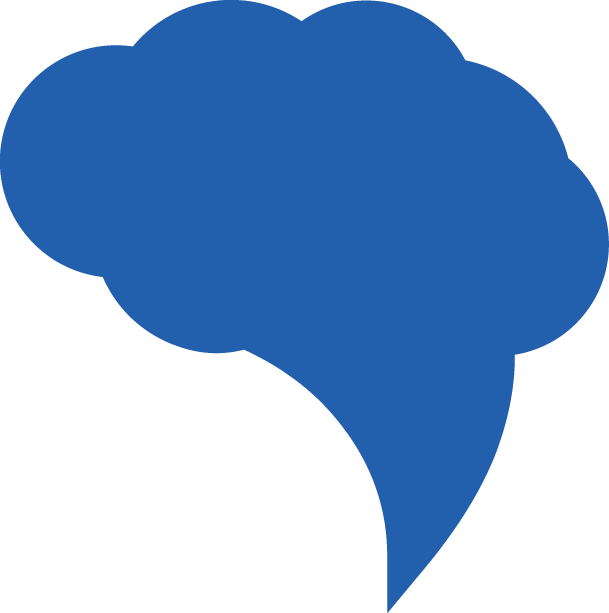How To Supercharge The Search Ranking Of Your LinkedIn Profile & Resume

You probably know that you should always target your resume when you apply for an open position and that you should add keywords related to your desired position throughout the sections of your LinkedIn profile.
But do you actually know what targeting a resume or LinkedIn profile involves?
Most PhDs think that they just need to look at the skills mentioned in a job posting and sprinkle a couple of them throughout their professional profile.
This is the bare minimum.
If you want to ensure your LinkedIn profile always comes at the top of searches and your resume always makes it past the Applicant Tracking Software (ATS), you need to have a keywords strategy and apply it every time.
Take the following story recently shared by a member.
I used to think that targeting a resume or a LinkedIn profile was easy. After all, how difficult can it be to add the most used keywords of a job posting into my resume?
It wasn’t until I got hired and understood how things worked from the employer’s perspective that I realized how wrong I was.
Just adding a couple of words from a job posting wasn’t enough, anybody can do that in five minutes.
If you want to differentiate yourself, you need to understand how ATS works and what employers are looking for.
You need to add at least 50% of the keywords of a job posting if you want to be certain your resume is targeted for the position.
And I have to say, it really makes a difference. Every once in a while I review resumes for my company and you can tell when the candidate went the extra mile.
The effort shows right away and those are the candidates who get hired.
How Algorithms Rank Your Resume And LinkedIn Profile
Search engines rely on algorithms to find relevant content when someone makes a search.
A similar principle applies to LinkedIn and the Applicant Tracking System Software that most companies use to weed out resumes.
The whole goal of these algorithms is to make it easier for employers to look at key information faster, without having to read through thousands of resumes or profiles.
So, how does the algorithm work?
Employers add desired keywords for the positions they are trying to fill. This can be job titles, locations, transferable skills, etc.
Then, the algorithm sends crawlers that rapidly go through different profiles or resumes to find the candidates that better fit the search parameters.
Finally, the crawlers save the information in an index stored in data centers or databases and show the results to the gatekeeper who did the search.
The more keywords you include in your resume and Linkedin profile, the higher you will appear on searchers and the higher your chances of being called for a phone screen.
Of course, employers can add other metrics to their searches, such as your desired salary or whether or not you have a gap in your resume. It’s impossible to know the exact parameters of an ATS.
But you can increase your chances by making sure you always apply with a targeted resume and LinkedIn profile and have a keyword strategy in place.

6 Wizard-Like Strategies For Driving Your Professional Profiles To The Top Of Every List
You might be wondering what I mean by a keyword strategy.
I mean that you put in the effort to make sure you not only identify the most relevant keywords, but you know how those keywords relate to each other and how you can incorporate them into sentences and bullet points that make sense.
This might take some time, but if you do it right, you will get ahead of the competition and ensure your LinkedIn profile and resume stand out.
So, let’s take a look at 6 good practices you can follow to improve keywords strategy when targeting your resume and LinkedIn profile.
1. Never submit an untargeted resume or leave you LinkedIn profile incomplete
As I told you before, crawlers gather and store information. They’re not continuously crawling and going back to the data to see if there was an update.
This means that if you have an incomplete LinkedIn profile and crawlers gather that information, it might take them a couple of days to go back to your profile.
So, even after you update it, it will take some time before you start appearing in searches.
Things are even worse with ATS. It might take months and even years for these crawlers to update your information once you submit a resume to a company.
Let’s say you apply for a position with an untargeted resume and you get rejected.
Then, after a couple of months, you see a new position that matches your skills and submit a targeted resume with your second application.
The company’s crawlers might still pull in the data from your first resume.
Don’t put a resume out there thinking you can always update it later because sometimes you can’t. Sometimes that resume is what’s going to be crawled over and over again.

To avoid this, you should always keep your LinkedIn profile up to date and use targeted resumes when applying to industry positions.
2. Put in maximum effort to identify all the relevant keywords in a job posting
Once you decide to apply for a position, you have an important piece of information in your hands: the job posting.
This is the same piece of information that employers use when programming the algorithm to search for the best candidates.
So, your first step should be to identify the keywords used in the job posting and try to incorporate them to the best of your ability to your LinkedIn profile and resume.
When I talk about incorporating the right keywords, I mean the exact keywords as stated in the job posting.
Don’t try to get creative. Don’t worry about plagiarizing. The employer is looking for those exact words or they wouldn’t have added them to the job posting.
So, what counts as a keyword? First of all, the job title, which is the most important keyword and you should always add to your resume and LinkedIn profile.
Then, you can look at the transferable and technical skills. A good way to identify those is to look at the nouns and verbs.
3. Use word cloud tools to get insights from several job postings at a time
The exercise I just described is useful if you are preparing an application for a specific job posting, but what about when you’re creating your LinkedIn profile and just have a target job title to get by?
The best approach in this case is to look for several job postings – 20 or 30 is a good starting point – and identify the keywords they all have in common.
Doing this manually can be a lot of work, so save yourself some time by using word cloud tools like wordcloud.com, wordclouds.com, or wordart.com.

Put all the content of your job postings into one of these tool. The words that show up the biggest are the ones you want to add to your LinkedIn profile.
Keep in mind the rules we discussed in the previous section; focus on job titles, skills, nouns, and verbs.
4. Understand the limits of keywords
Keywords are important, and if you want your resume or LinkedIn profile to appear at the top of searches, you need to add as many keywords as possible.
Without considering pronouns, prepositions, and articles 60-70% of the words in your resume and LinkedIn profile should be high-impact keywords.
But keep in mind that the remaining words are very important as well. You can’t just add one keyword after another. You need sentences and bullet points that make sense.
After all, if you add the right keywords, your resume and LinkedIn profile will be in the hands of a real person and they need to understand those keywords in the context of what you can do for their company.
Here’s a list of powerful words you can use to give context to your keywords: assigned, collaborated, devised, enhanced, exceeded, generated, implemented, increased, innovated, negotiated, organized, pioneered, presented, quantified, reviewed, strengthened, surpassed, trained, upgraded.
These words have to do with leadership and showing initiative and point the reader towards the results you’ve accomplished.
Even if they don’t carry keyword weight, they will increase the overall quality of your resume and LinkedIn profile.
5. Utilize specific, “long-tail” keywords over short keywords
You have probably noticed that some keywords have more than one word. They can have two, three, or up to seven words in a row.
These long groups of keywords that only work when put together in the right order are called long tail keywords. Whereas the small terms are called short term keywords.

Long term keywords are more specific than short term keywords. This means that they get ranked hired, but are less likely to appear in the search parameters.
Short term keywords are very likely to appear in the search parameters, but everyone adds them to their resume, so they might fail to differentiate you.
The key here is to find a balance and mostly use keywords that are two to three words long.
6. Build a keyword map for your target positions
Once you have spent some time familiarizing yourself with the job posting for your target position, you will start noticing how keywords come together.
For one, you will become more familiar with the keywords that industry employers use, which can be different from the ones you’re used to in academia.
Let’s say you’re targeting MSL positions, you will probably notice that in industry they use medical terms like “oncology”, instead of scientific terms like “cancer biology”.
The other thing you will notice is that some keywords tend to fit together. Some keywords are always used alongside others.
This happens because keywords have rankings. Some keywords appear more often and are related to many other keywords. These are called central keywords.
The keywords that appear less often and are less related are called distal keywords and they come in different levels.
Once you start identifying the central and distal keywords related to your target position, you can start creating a keyword map with the central keywords in the middle and the distal keywords towards the edges.
Having a mind map will help you put the keywords together in the right order when you’re crafting your resume and LinkedIn profile, thus creating bullet points and paragraphs that make sense.
This is a much better strategy than just sprinkling a couple of keywords as you go.
It will take some extra time, but you only have to do it once for each target position and once you have your keyword map in place, you can use it every time you send a job application or update your LinkedIn profile.
Keep in mind that most candidates are not putting in the extra effort. So by doing it, you will ensure you appear at the top of searches and beat the algorithm almost every time.
Concluding Remarks
Targeting a resume or LinkedIn profile for your desired position goes well beyond sprinkling a handful of keywords and hoping to get noticed by employers. You need to include the right keywords in the right amount and order if you want to appear at the top of searches every time and avoid being flagged by employers. Upscale you keyword game by making sure to always submit a targeted resume, identify the relevant keywords for your target position, use word clouds to get insights from several job postings at once, make sure to add impactful words that will give meaning to your keywords, use the right combination of long tail and short tail keywords, and build a mind map for you target position. If you follow these 6 steps, you will beat the algorithm every time and have a real person reading your resume and LinkedIn profile.
If you’re ready to start your transition into industry, you can apply to book a free Transition Call with our founder Isaiah Hankel, PhD or one of our Transition Specialists. Apply to book a Transition Call here.

ABOUT ISAIAH HANKEL, PHD
CEO, CHEEKY SCIENTIST & SUCCESS MENTOR TO PHDS
Dr. Isaiah Hankel is the Founder and CEO of Cheeky Scientist. His articles, podcasts and trainings are consumed annually by millions of PhDs and other professionals in hundreds of different countries. He has helped PhDs transition into top companies like Amazon, Google, Apple, Intel, Dow Chemical, BASF, Merck, Genentech, Home Depot, Nestle, Hilton, SpaceX, Tesla, Syngenta, the CDC, UN and Ford Foundation.
Dr. Hankel has published 3X bestselling books and his latest book, The Power of a PhD, debuted on the Barnes & Noble bestseller list. His methods for getting PhDs hired have been featured in the Harvard Business Review, Nature, Forbes, The Guardian, Fast Company, Entrepreneur Magazine and Success Magazine.
More Written by Isaiah Hankel, PhD































